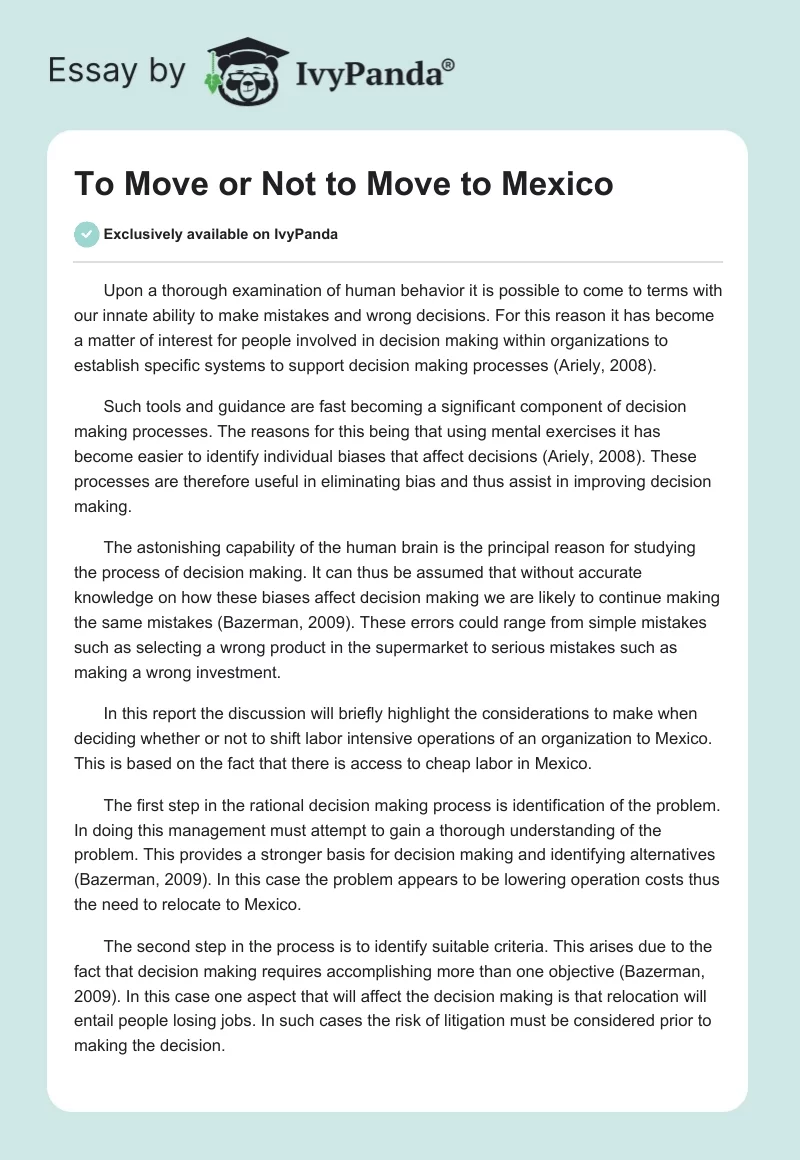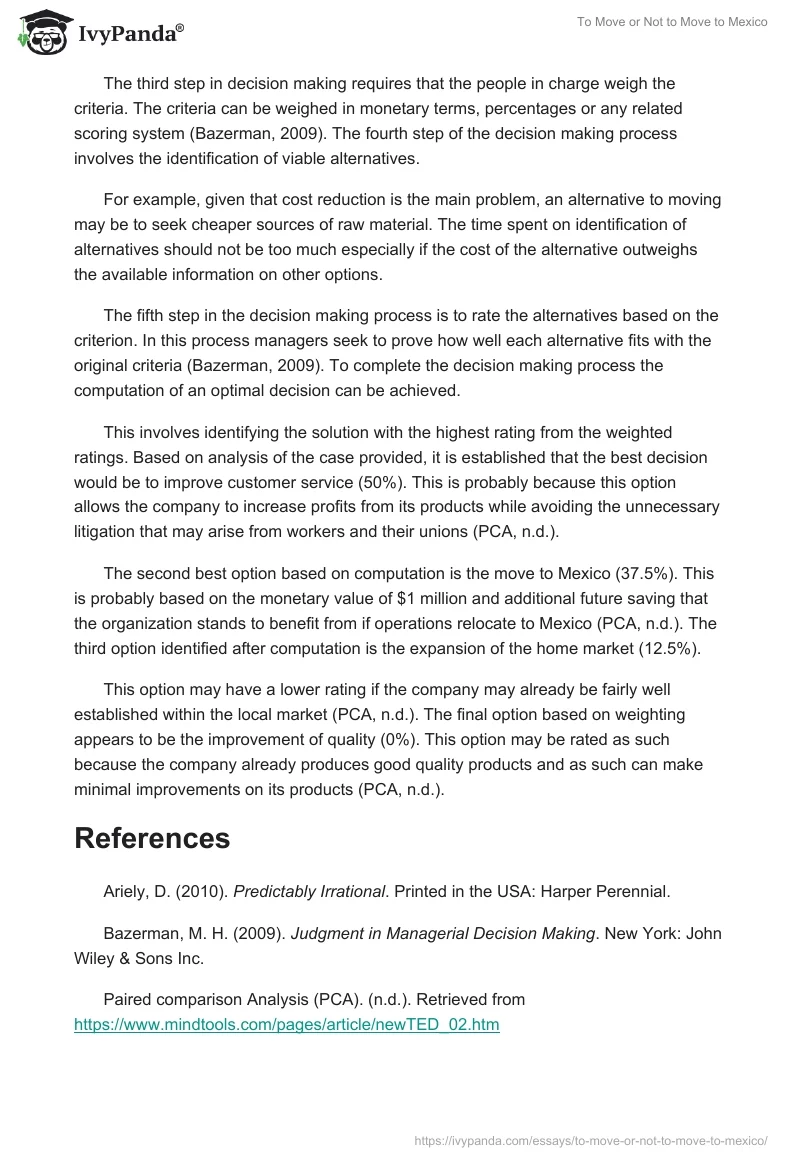Upon a thorough examination of human behavior it is possible to come to terms with our innate ability to make mistakes and wrong decisions. For this reason it has become a matter of interest for people involved in decision making within organizations to establish specific systems to support decision making processes (Ariely, 2008).
Such tools and guidance are fast becoming a significant component of decision making processes. The reasons for this being that using mental exercises it has become easier to identify individual biases that affect decisions (Ariely, 2008). These processes are therefore useful in eliminating bias and thus assist in improving decision making.
The astonishing capability of the human brain is the principal reason for studying the process of decision making. It can thus be assumed that without accurate knowledge on how these biases affect decision making we are likely to continue making the same mistakes (Bazerman, 2009). These errors could range from simple mistakes such as selecting a wrong product in the supermarket to serious mistakes such as making a wrong investment.
In this report the discussion will briefly highlight the considerations to make when deciding whether or not to shift labor intensive operations of an organization to Mexico. This is based on the fact that there is access to cheap labor in Mexico.
The first step in the rational decision making process is identification of the problem. In doing this management must attempt to gain a thorough understanding of the problem. This provides a stronger basis for decision making and identifying alternatives (Bazerman, 2009). In this case the problem appears to be lowering operation costs thus the need to relocate to Mexico.
The second step in the process is to identify suitable criteria. This arises due to the fact that decision making requires accomplishing more than one objective (Bazerman, 2009). In this case one aspect that will affect the decision making is that relocation will entail people losing jobs. In such cases the risk of litigation must be considered prior to making the decision.
The third step in decision making requires that the people in charge weigh the criteria. The criteria can be weighed in monetary terms, percentages or any related scoring system (Bazerman, 2009). The fourth step of the decision making process involves the identification of viable alternatives.
For example, given that cost reduction is the main problem, an alternative to moving may be to seek cheaper sources of raw material. The time spent on identification of alternatives should not be too much especially if the cost of the alternative outweighs the available information on other options.
The fifth step in the decision making process is to rate the alternatives based on the criterion. In this process managers seek to prove how well each alternative fits with the original criteria (Bazerman, 2009). To complete the decision making process the computation of an optimal decision can be achieved.
This involves identifying the solution with the highest rating from the weighted ratings. Based on analysis of the case provided, it is established that the best decision would be to improve customer service (50%). This is probably because this option allows the company to increase profits from its products while avoiding the unnecessary litigation that may arise from workers and their unions (PCA, n.d.).
The second best option based on computation is the move to Mexico (37.5%). This is probably based on the monetary value of $1 million and additional future saving that the organization stands to benefit from if operations relocate to Mexico (PCA, n.d.). The third option identified after computation is the expansion of the home market (12.5%).
This option may have a lower rating if the company may already be fairly well established within the local market (PCA, n.d.). The final option based on weighting appears to be the improvement of quality (0%). This option may be rated as such because the company already produces good quality products and as such can make minimal improvements on its products (PCA, n.d.).
References
Ariely, D. (2010). Predictably Irrational. Printed in the USA: Harper Perennial.
Bazerman, M. H. (2009). Judgment in Managerial Decision Making. New York: John Wiley & Sons Inc.
Paired comparison Analysis (PCA). (n.d.). Web.
Appendix
Appendix A: Paired Comparison Analysis
(PCA, n.d.).


